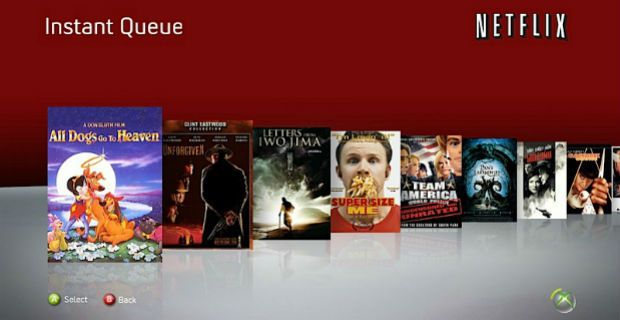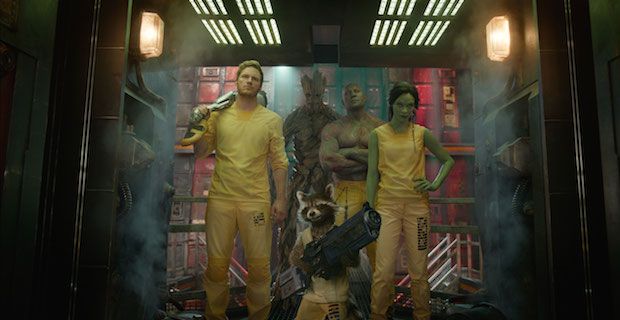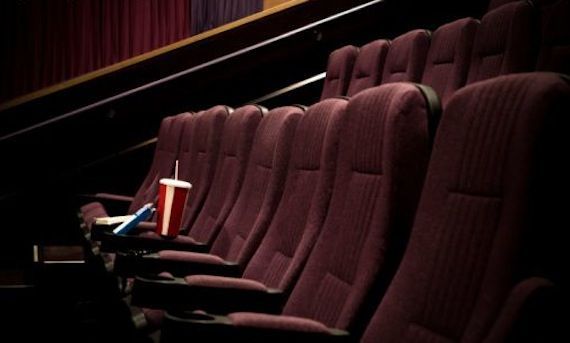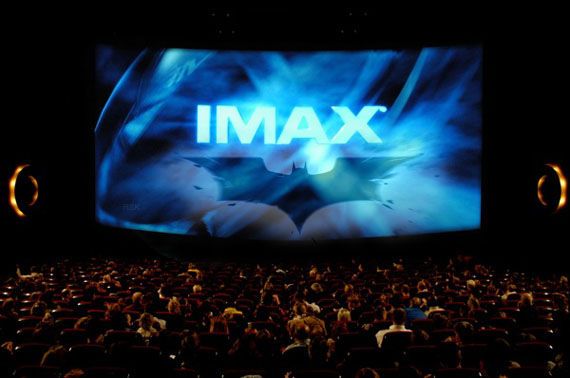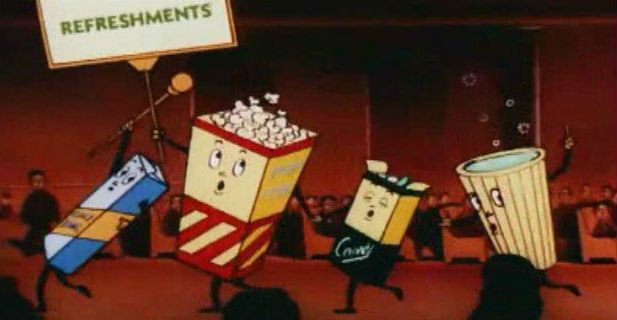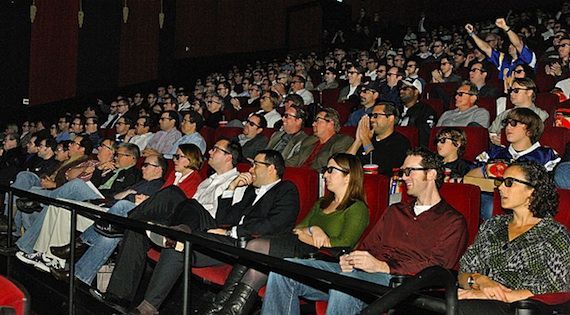The Weinstein Company, Netflix and IMAX caused quite the stir earlier this week when they announced they were partnering to distribute Crouching Tiger, Hidden Dragon: The Green Legend exclusively and simultaneously through the streaming service and in IMAX theaters worldwide. It's a decision that has several major theater chains - including Regal, Cinemark, and AMC Theaters - angry over a ploy to cut them out of the distribution process and they're now refusing to screen the film.
Releasing a new film both in theaters and through on-demand isn't unheard of, but the suddenness of TWC's decision to try this untested means of film distribution with a sequel as eagerly anticipated as the one to Crouching Tiger, Hidden Dragon is unprecedented. Yet, as theater attendance continues to drop, you can't really blame studios for looking at new ways to bolster their dwindling box office grosses.
Netflix boasts more and more subscribers every year, with roughly 50 million subscribers worldwide as of this posting. That's a significant increase over where the company was only a few years ago, and it's a good business strategy for studios to try reaching consumers where they already are: sitting at home in front of their TVs. That was clearly actor/writer Adam Sandler's thought process when he signed an exclusive four-picture deal between his production company, Happy Madison, and the streaming outlet.
All of this begs the question: Should movie theaters be worried about streaming services like Netflix stealing their audience?
Judging by how vehemently theaters are refusing to cooperate, they clearly believe new films being made available to stream at home on the same day as a theatrical release is a big threat. Though their decision to flat out refuse to screen Crouching Tiger 2 may prove harmful - and their unwillingness to try something new - could signal just how behind the times these major theater chains actually are.
-
Changing How We Watch Movies
There is no denying that how we consume home media has changed drastically over the last two decades. The video rental shops are gone, and now the latest releases can be rented via mail or through Redbox's abundant kiosks. Thanks to how commonplace Internet access has become, perks that once only came with premium cable or satellite subscriptions - like instantly streaming or downloading a new movie, for example - are now readily available through pay services like iTunes or Amazon Instant.
In addition to how easy it is to rent or own a movie, watching that movie at home has evolved into an entirely different experience. Today's televisions are generally larger flat panel displays with a widescreen presentation. They come with improved sound, too, though many viewers also invest in surround sound to more accurately mimic the theatrical experience. And the home video releases themselves have only improved in quality since the advent of high definition formats like Blu-ray.
A better home viewing experience coupled with easier access to movies - put it all together and it's plain see why our habits have shifted toward watching more movies in the comfort of our own homes. And that's especially true if it's a film many consider unworthy of theater viewing - that is to say, a movie that doesn't necessarily benefit from a movie theater's larger scale and more robust sound. A drama or a romantic comedy, for instance, can be just as moving on a smaller, more intimate screen, while a fast-paced, action-packed thriller might lose some of the spectacle.
Deciding whether or not to see a film in theaters is a choice movie-goers are making all the time, and one need only look at what films dominate the box office every year to see how they choose. Superhero movies, big action blockbusters, animated family films. For the most part, audiences choose to see films in theaters that have impressive visual effects and sound, which a theater's presentation will only enhance.
Interestingly, Crouching Tiger 2 would likely fall into that category of a movie enhanced by a theater's video and sound projection, especially since it's sure to include incredibly choreographed fight scenes and sweeping views of beautiful vistas. But with more and more theater chains refusing to screen the film, North American audiences may have to settle for an at-home viewing.
-
Movie Theater Struggles
There are other factors, however, that are playing into why movie theaters have been experiencing a steady decline in business. For one, those same advancements that led to a better home viewing experience also led to more forms of entertainment constantly vying for our attention.
Television continues to be tough competition for the movie theater. In many ways, TV has simply stolen a lot of cinema's best tricks - like good production values and top tier actors - and brought them into people's living rooms. In addition, video games have progressed rapidly over the last decade and have recently come into their own as an impressive - and more importantly, immersive - medium for storytelling. And as if that wasn't enough, there's the Internet and its pervasive role in our everyday life.
Today, consumers have a ridiculous amount of choices for how to unwind, and movie theaters aren't always the most tempting option. Their biggest obstacle driving away consumers is the rising price of admission, which in 2013 saw the average cost of a movie ticket in America cross the $8 mark for the first time. (And if you live in a major metropolitan city, it's nearly $14 without 3D.) That increase is partially due to the higher prices for 3D and IMAX tickets, but it's also related to the sagging box office numbers.
As films earn less revenue, the studios that produce them earn less. Because of this, studios start taking a larger cut of the profit made from ticket sales, leaving the exhibiting theater with less. This is why the price for tickets and even concessions (where a movie theater earns the vast majority of its profit) have risen, while the earnings at the box office continue to fall.
Then again, theaters purposefully refusing to screen what could potentially be a high-grossing film - especially when bolstered by those higher costing IMAX tickets - might be doing themselves a disservice. Either way, TWC, Netflix, and even IMAX - thanks to the growing number of IMAX screens operating in China - will make back their investment. Assuming, of course, that Crouching Tiger 2 isn't a total flop.
-
Still Worth Going to the Movies?
This debate over improved home theaters, more choices in entertainment, or simply that movie theaters have become too expensive all boils down to one question: Is it still worth going to the movies? YES. Unequivocally, yes.
While the advancements in home theaters have been great and are likely only to improve, nothing in your living room will compare to a move theater's 70 ft screen and hundreds of speakers. Most movies are made to be screened on a larger-than-life scale, and that's a trick television will likely never be able to copy.
Plus, it's not as if the theaters have been stagnant, they too have been upgrading with new features. Most major chain theaters have progressed to entirely digital presentations, forgoing traditional film prints which show wear and over time break down. There's the obvious additions of 3D and IMAX presentation, and slowly more filmmakers are opting for the faster frame rate of 48fps.
Beyond these changes in how a theater presents its films, more and more theaters are catering to whole 'movie-going' experience. Recent years have seen a surge in theaters that serve better quality food than the typical concession stand fare; in some cases they'll even have full kitchens and bars, operating more like a restaurant than a movie theater. Some feature reserved seating to guarantee you have the best seat in the house, while others have begun enforcing strict no-texting policies to better ensure a distraction-free viewing environment.
But more important than all the new trends theaters are employing to entice us back, movies are meant to be communal. Without sounding too sentimental, a film is an experience to be shared among total strangers, in a dark room lit only by the screen, where every thrill and emotional beat is felt by an audience linked by proximity. Watching a movie at home by yourself, or even with a few like-minded friends, will never compare to that.
-
Do you believe this is the beginning of a shift in how major studios distribute their films? Should movie theaters be worried about being cut from the process? Let us hear what you think in the comments below!


